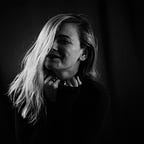Debrecen — City of Fusion
Strolling through Debrecen’s center on a rainy October day, all I could think was: “Now this is a beautiful city of fusion!” Despite the somewhat unpleasant mixture of drizzle and chill, the city itself is undoubtedly attractive.
Probably the greatest view of the city (and my first encounter with its complex personality) can be seen from atop the Reformed Great Church of Debrecen, an imposing construction situated on Piac Utca between Kossuth Square and Calvin Square, the very heart of the city.
With more than 200 years of history within its walls, the church is carefully preserved inside and out. What’s more, the interior successfully demonstrates a rather surprising acceptance of other religions and cultures, featuring a hall full of mock-ups and models of the city of Jerusalem, biblical sets, and temples from Egyptian and Roman mythology.
The Déri Múzeum & the Modem (a modern art museum) stand adjacent to the city center. The juxtaposition conveys a wild mix of old and new as well. Although the Déri was slightly lacking in terms of exhibitions, its first floor did feature two gigantic paintings by Hungarian artist Munkácsy Mihály from his trilogy depicting the Passion of the Christ.
Why not all three parts of the trilogy, you ask? The third and final painting from the trilogy is currently the subject of an ownership dispute between the American-based Hungarian businessman Imre Pakh and the Hungarian Government, which is actively trying to reclaim it. The ground floor hosted an exhibition of Romanian Catholic church items, ranging from 18th-century paintings (weirdly depicting St. Mary and Jesus) to priests’ toggery and “props” crafted more than 250 years ago.
The Modem, on the other hand, was host to many exhibits on all three of its floors. What I am sure will stick in my mind longest is the “portrait floor.” Continuing Debrecen’s flair for fusion, the term “modern” seemed to be rather flexible, as seen in one exhibition which featured portraits dating from the 1700s all the way up to the contemporary period. The eclectic mash-up provided a delightful study of the evolution of art. As we ventured up the stairs to explore all three stories, the art became more and more contemporary, culminating in full-on “modern art,” which I personally fail to understand sometimes. (I am talking about white canvases with smudges on the sides; I am sorry, modern art, I am weak and your deep expressions elude me!)
But enough with the interior! We walked up and down Piac Utca, completely mesmerized by the buildings on both sides of the busy tramways. Evidently, the fusion of old and new was inescapable, becoming even more pronounced as I passed Art Nouveau buildings situated just across from a WW II construction, immediately followed by a pastel-pink super-square structure.
To me, the most intriguing construction was a 1938 apartment block guarded by four workmanship statues; the Nazi influence was practically written on the walls. The building apparently had four floors, but the highest had no windows, and upon a closer look (yes, we went around the back) we discovered it was merely a façade, only pretending to house apartments. I am still thinking about that one.
Oddly enough, absolutely everything worked well together, thus forming an impressive vista that was a feast for the eyes. I’ll also have to award bonus points for some cute cafés (decorated in the same fusion manner, this time with obvious hipster influences) and the great Hungarian wine. All in all, Debrecen turned out to be an enticing cocktail of which I’d definitely have another round.
Photo credit: Flavius Neamciuc
If you’ve enjoyed this article, please consider recommending/sharing it.
Our latest articles: Chronicles on the road: Banská Bystrica, Chronicles on the road: Prešov and Spiš Castle,Chronicles on the road: Tokaj and Košice, Chronicles on the road: Debrecen, Guča Trumpet Festival, The Roman Galleries of Roşia Montană.
Follow Eastern Chronicles on Medium, Facebook, and Instagram.
